"We don’t understand how a single star forms, yet we want to understand how 10 billion stars form." -Carlos Frenk
The Universe has been around for a long time: nearly 14 billion years, to the best of our knowledge. When it was very young, there were absolutely zero stars in it, while today, there are hundreds of billions of galaxies, each of which contains anywhere from a few billion to many trillions of stars.
The galaxy shown above, NGC 2841, is very similar to our own Milky Way. Approximately the same size and shape, this massive spiral is full of dust lanes, flocculent arms (with multiple branches), a central bulge, and perhaps the only major apparent difference is there's no central bar like the Milky Way has. But one other important thing this galaxy has in common with our own is a very low rate of star formation.
How can you tell how quickly a galaxy is forming stars? Compare the spiral above with the Whirlpool Galaxy, below.
The beautiful grand-design spiral (with two big, sweeping, wrapping arms) also has lots in common with the Milky Way, but its star formation rate isn't one of them. You don't need to be an expert in star formation, either, to know this: all you need to do is look at the colors in this galaxy.
See all that pink in those spiral arms?
That's your evidence for star formation! No, really, it is, even though it might seem a little counterintuitive.
To understand this, let's take a close look at the largest star forming region in our local group of galaxies: the Tarantula Nebula in the Large Magellanic Cloud.
First off, you'll notice it is that same red/pink color I showed you along the Whirlpool Galaxy's arms, but you might wonder why that's so.
After all, it's not like the hot, blue, newly-formed stars powering it give it that blue color, right? Let's take a look at the core of the Tarantula Nebula, where two star clusters, each containing hundreds of these hot, blue stars, are in the process of merging together.
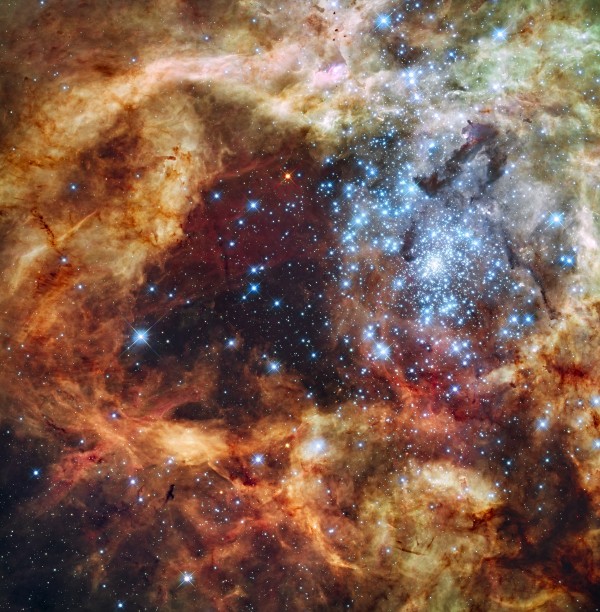
Image credit: NASA, ESA, & F. Paresce (INAF-IASF), R. O'Connell (U. Virginia), & the HST WFC3 Science Oversight Committee.
These stars themselves, although relatively short-lived, are far bluer than our Sun is. Yet, believe it or not, that's exactly where the secret lies!
The hotter a star is, the bluer it appears to us, because it emits relatively more blue light than red light. But the spectrum of light emitted by a star goes oh-so-much farther -- in both directions -- than what our eyes can perceive. And for these hotter, bluer stars, the vast preponderance of that energy gets emitted in ultraviolet wavelengths.
With all that ultraviolet light, the atoms in the surrounding gas -- which are mostly hydrogen, remember -- become ionized, as the ultraviolet light is powerful enough to kick the electrons in these atoms off of their nuclei.
But there are well over -- are you ready -- 1060 hydrogen atoms in every known star-forming region, meaning that each electron is incredibly likely to run into a hydrogen nucleus in short order, forming neutral hydrogen once again.
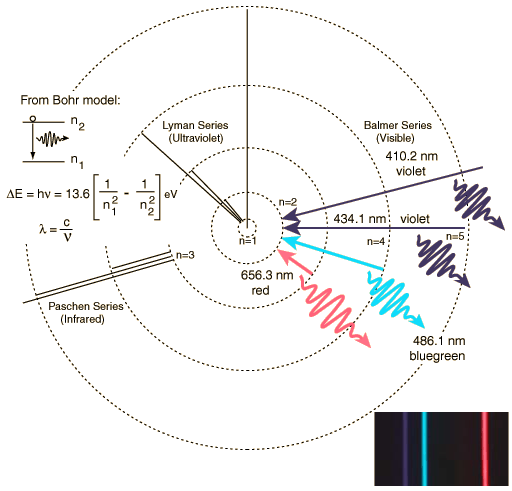
Image credit: Hyperphysics at Georgia State University, http://hyperphysics.phy-astr.gsu.edu/hbase/hyde.html.
And when that happens, the electron drops through the hydrogen atom's discrete energy levels, emitting a very characteristic red line (at 656.28 nanometers) and that's what turns the regions of space where new stars form red! (Or pink, when combined with the underlying white/blue-white starlight.)
Here's maybe another familiar star-forming region -- the Eagle Nebula -- but presented in the same colors that the human eye would perceive it.
Despite the Eagle Nebula, above, being located within our own galaxy, it still forms less than one star-per-year, on average. In fact, the entire Milky Way, when all the star-forming regions are summed up, forms only about one new solar mass' worth of stars each year. (See here for some gory details.)
But this hasn't always been the case, either for our galaxy or many of the other quiet ones, which we know just from counting.
There are about 200-400 billion stars in the Milky Way, while the Universe itself is less than 14 billion years old. If we only formed about one star-per-year over the history of the Universe, our galaxy would only have about 5% of the stars that it actually does!
So something must've been different long ago to form all the stars we currently have. And we can figure that out by looking at galaxies with much larger star formation rates today! What do those galaxies look like?
There are galaxies, like NGC 660, above, where practically the entire galaxy is a star-forming region, which makes it known as a starburst galaxy. This normally happens when a galaxy interacts with another one gravitationally, either swallowing a smaller companion, passing nearby a large gravitational source, or, in the most extreme case, going through a major merger.
Prior to this week, the most spectacular starburst galaxy we knew of was this giant monstrosity at the center of the Perseus Cluster.
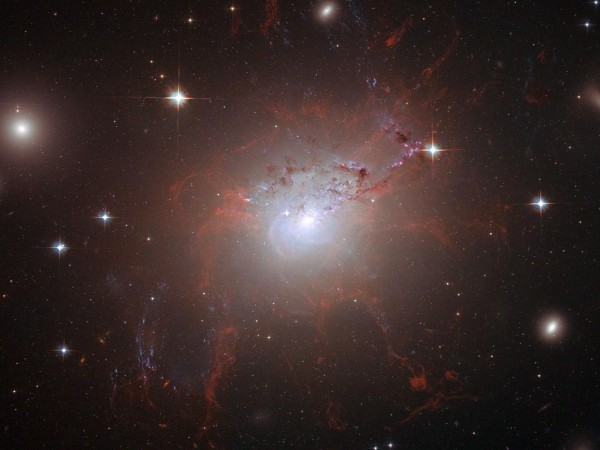
Image credit: NASA, ESA, and the Hubble Heritage (STScI/AURA)-ESA/Hubble Collaboration. Acknowledgment: A. Fabian (Institute of Astronomy, University of Cambridge, UK).
A smaller, fast moving galaxy is in the foreground, just maybe 200,000 light years (twice the diameter of the Milky Way) away from the central giant galaxy, and you can see the great pink regions indicative of star formation in here. But although the star-formation rate in this galaxy is huge -- maybe 40 times the rate of our own galaxy -- the central, active black hole causes the gas to get too hot to form stars too rapidly. Otherwise, the star formation rate could have gotten up to hundreds or even maybe a thousand times what our galaxy gets, but galaxies at the centers of clusters, with their supermassive black holes and hot, active cores, seem to forbid this.
We've thought that this was a limitation of large galaxies in general for a long time, and this was a spectacular example from a galaxy more than 200 million light years away. But there's a new record-breaker in town, and for once, this observation solves some previous problems!
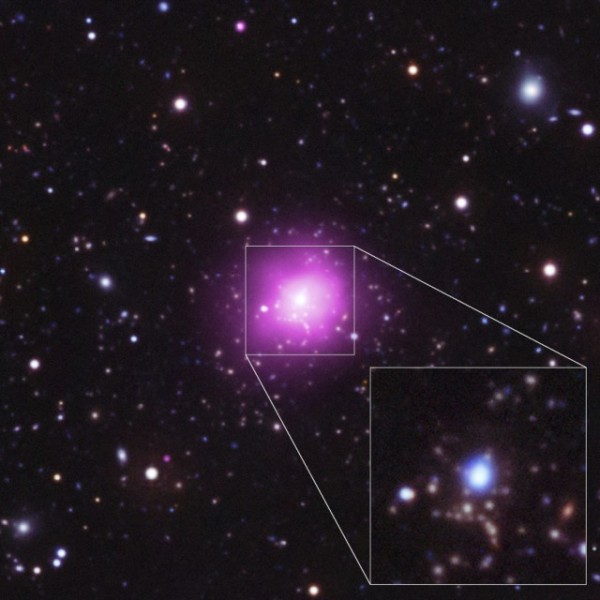
Image credit: X-ray: NASA / CXC / MIT / M.McDonald; UV: NASA / JPL-Caltech / M.McDonald; Optical: AURA / NOAO / CTIO / MIT / M.McDonald.
The newly discovered Phoenix Cluster, located over 5 billion light-years away, has many of the same properties: it's a huge galaxy with a large central, supermassive black hole. (For comparison, it's maybe 5,000 times as massive as our galaxy's supermassive black hole!) It emits intense X-rays, and it definitely counts as an active galaxy.
But unlike all other known galaxies at the center of clusters, the core of the Phoenix Cluster has a star formation rate that rivals the fastest known star forming regions in the Universe, forming over 700 stars per year in the central region!
Before this discovery, it was a little bit mysterious how the central cores of giant galaxy clusters got as large and massive as they are, given how these active, supermassive black holes seemed to forbid star formation. But this new discovery shows us that it is not forbidden!
And obviously, there are more stories and angles here than I'm capable of covering in just the few articles a week I manage to put out. While I'm always happy to give you the science behind the biggest stories happening in the Universe, sometimes it simply comes out faster than I can write about it. But the Universe is such a wonderful place, I don't want you to miss a thing, so I've set up something I think you'll truly love: a way for you to stay on top of all the latest stories about Outer Space from around the entire world!
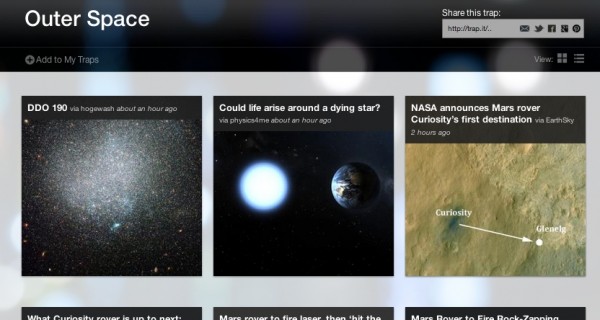
Image credit: http://trap.it/.
Meet the Outer Space trap, a real-time collection of news content -- updated continuously -- that ranges from news within our own Solar System to the furthest reaches of the Universe. And it gets my seal of approval, because I made it myself. There's far too much for me to cover it all, but that doesn't mean you should miss any of it, so I've done my best to bring you the best in content from every reasonable, reliable source of information out there. Follow @TheSpaceTrap on twitter or join the facebook community, because I want to give you every opportunity to learn about all the wonderful things we're learning about the Universe. And whatever you do, don't ever stop learning or abandon your sense of curiosity about what's out there and how it all works; I'll keep doing my best to bring it all to you!
- Log in to post comments

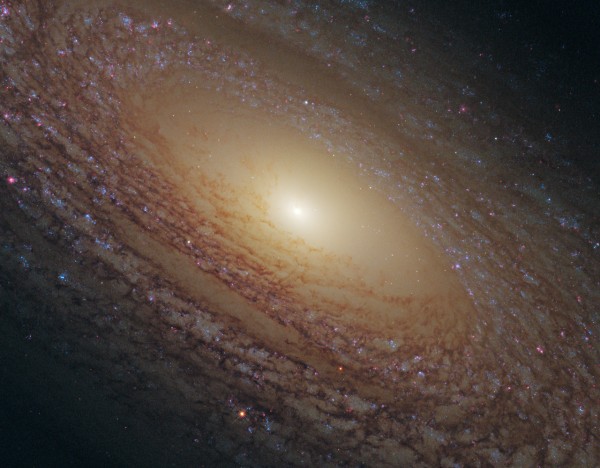
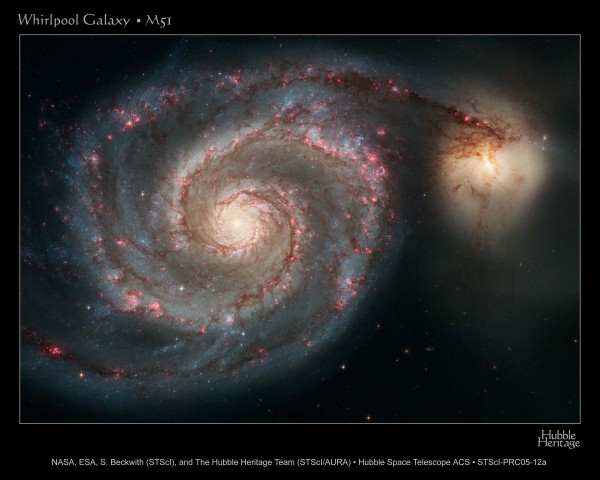
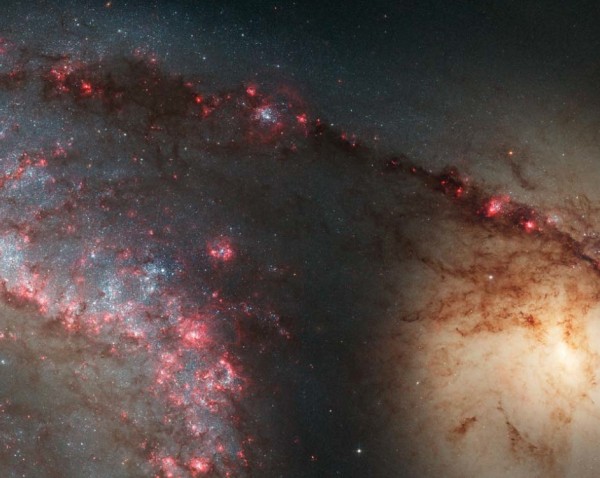
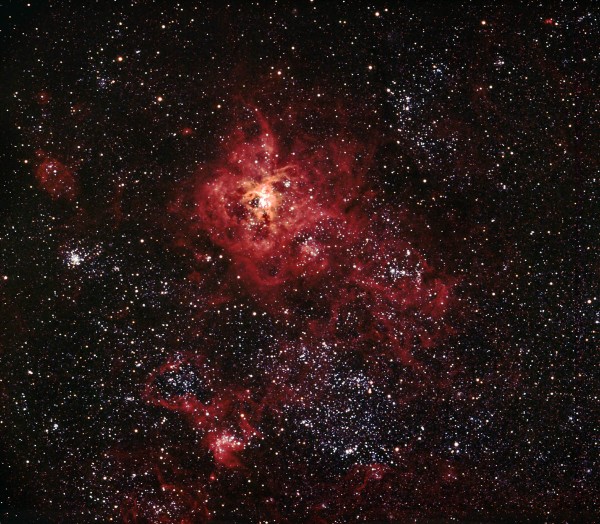
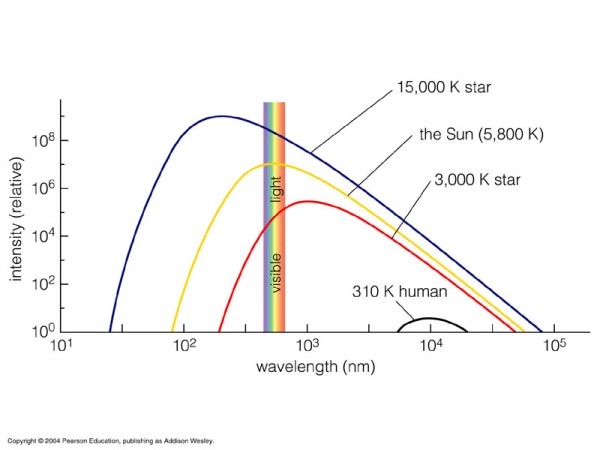
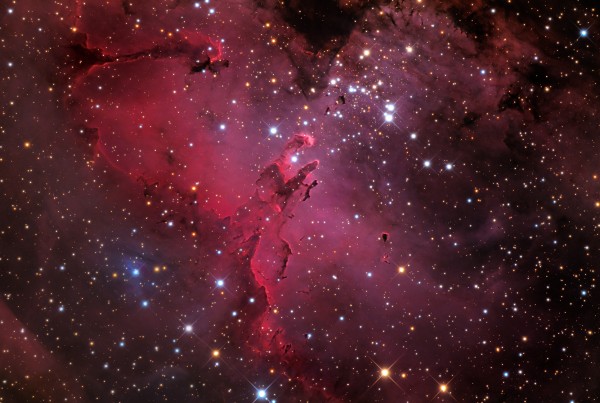
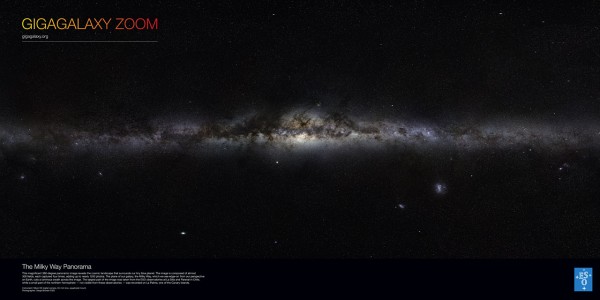
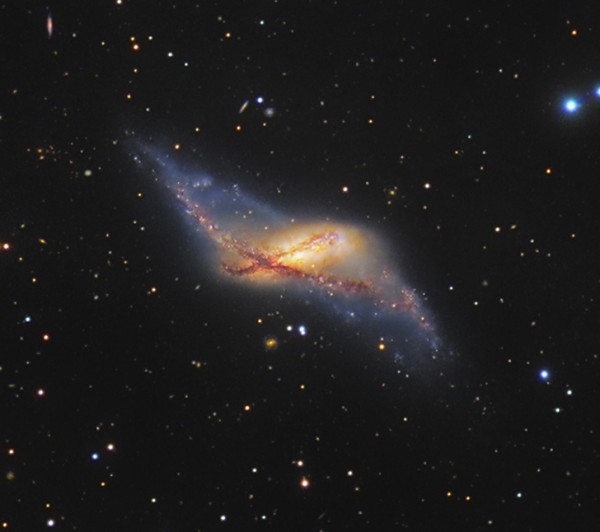
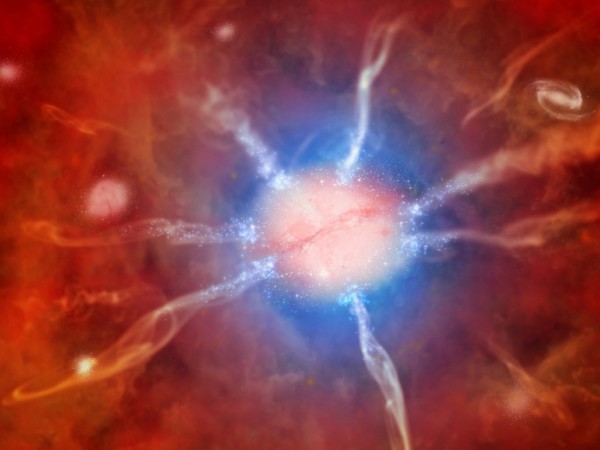
Very nice and exciting.
But what am I missing?
- the Milky Way has 300 Billion stars, the Phoenix Cluster has 3,000,000 Billion stars, i.e. 10,000 times more stars than the Milky Way
- the Phoenix Cluster's supermassive black hole is 5,000 times more massive than the Milky Way galaxy's supermassive black hole!
-The Milky Way forms 1 star per year; the Phoenix Cluster forms 740 stars per year
So I would expect that if the Phoenix Cluster was forming stars at the rate of the Milky Way galaxy that it would form 5,000 to 10,000 stars per year not 740 stars per year.
I need a comparison between the "central region of the Phoenix Cluster" compared to the Milky Way galaxy;
OR between the "whole Perseus Cluster" to the whole Milky way galaxy;
OR something else (e.g. a best guess big picture story)
Otherwise I've just got a hot spot in the whole Phoenix Cluster that on average may be forming stars faster or slower than the Milky Way.
I'm not arguing with these great observations of a star formation hotspot; I just need the big picture story a little clearer to put these observations in proper perspective.
I'm not sure what you mean by: "explaining how giant galaxies at the cores of clusters get to be so big, massive, and full of stars." Presumably they're big Even before the stars form - just that the mass isn't in the stars yet.
You need dust to form a star. They don't meet up in psirs and have little baby starlets
@ Angel Gabriel:
Why would you expect there to be a linear relationship between SMBH mass and star formation rate?
@ William:
Yes but all those things need to be explained. How does they get so big, and how do they form all of those stars (while stars require a large mass of dust, a large mass of dust does not imply rapid star formation).
@ Gabriel
Oh, I think I see. The thing is star formation rates aren't constant, and both Milky Way and Phoenix must have had much higher star production rates in the past to reach their current counts in the time the universe has been around.
star production in globular clusters is very low.
Why?
Because they don't have a lot of dust left over.
Same with elliptical galaxies.
Same reason why all the new star formations are in the ARMS of the spiral galaxies (that's where the dust is).